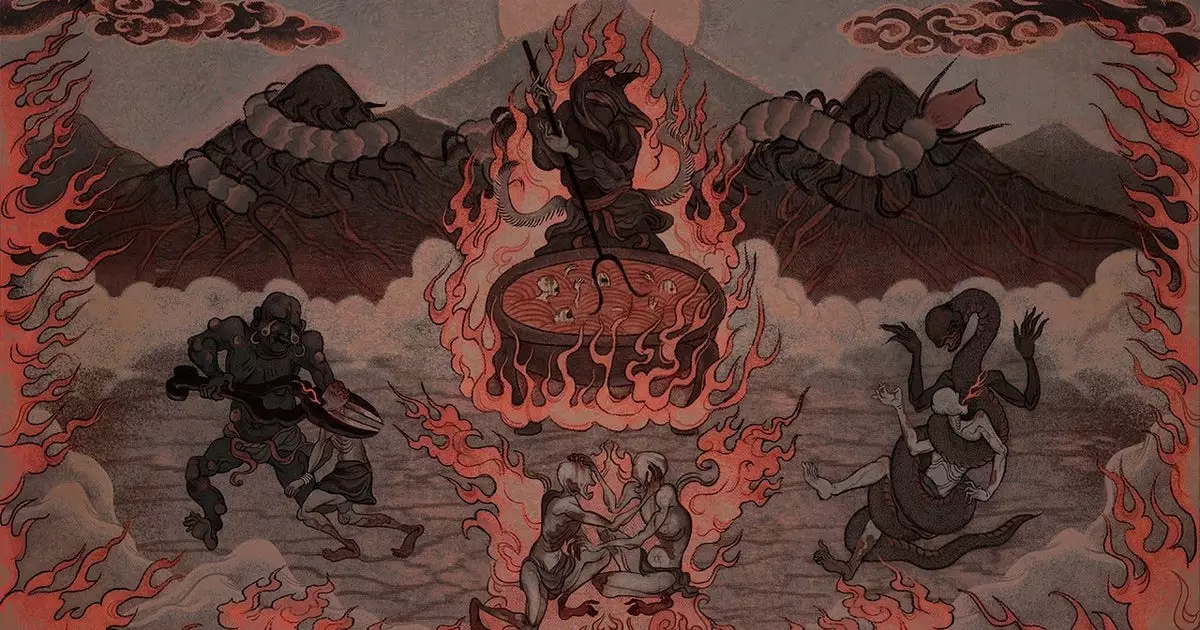Labyrinth Of The Demon King ushers players into a world that melds the nightmarish aesthetics of classic horror games such as Silent Hill and Amnesia: The Dark Descent, yet imbues it with a distinctively cumbersome gameplay mechanic reminiscent of the antiquated King’s Field series. What sets this title apart is its profound engagement with unease, drawing players into a realm where every encounter is laced with tension and suspicion. The charm of this game lies not in its polished visuals or conventional mechanics, but rather in its raw authenticity, as it effectively carries the essence of dread into a grotesque homage.
Setting the Stage: Mythical Feudal Japan
Set against a backdrop of mythical feudal Japan, Labyrinth Of The Demon King expertly crafts an environment where the supernatural and the grotesque converge. The feudal context is steeped in superstition, heightened by a relentless sense of decay and malaise that ingrains itself into the atmosphere. Players are thrust into a quest to vanquish a nefarious yokai boss, leading one’s lord into treachery. However, the real hero of this narrative is the oppressive environment filled with suffocating gloom that shapes your character’s every action and decision.
As you traverse the murky interstitial spaces, the pulsating whispers of the environment weave a fabric of tension that is at once familiar and foreign. Instead of a map littered with markers and signposts, players are guided by cryptic clues—making navigation itself a form of psychological entrapment. It’s an artful invitation to weigh one’s sanity against the palpable horror lurking in the shadows.
The Horrors Within
The enemies encountered throughout the labyrinth consist of grotesque caricatures of humanity—distorted beings marked by grotesque features, scuttling across the desolate corridors in a cacophony of claw and echo. The defining feature of these encounters is their chaotic nature. Instead of presenting straightforward enemies, Labyrinth Of The Demon King delivers a grim tapestry of creatures that not only pose a danger to you but also embody their own internal strife. This visceral conflict creates a paradoxical camaraderie among “filthbastards”—each enveloped in a realm where death is common, survival becomes a secondary concern.
The resource system is an exercise in cruelty, with players equipped with minimal gear—a broken katana, questionable medical supplies, and a bottle of sake. As the game progresses, survival becomes interwoven with the constant friction of managing these meager resources, epitomizing desperation. Players are confronted not with a straightforward path but rather a torturous journey where collecting fragments of hope becomes a macabre necessity.
Interactivity and Mechanics: The Struggle for Control
Mechanically, the game leans heavily on stamina-based combat reminiscent of earlier From Software titles. Yet, this system feels clunky rather than refined, forcing players to contend with sluggish movements that often impede the frantic pace of horror gameplay. Emphasizing the importance of tactical thinking, every strike carries weight, both physically and mentally, as the player grapples with the looming threat of failure.
The dynamics of hiding and utilizing the environment complement the game’s persistent dread, turning mundane objects into potential lifelines. For instance, the bewildering interaction with cupboards and crates becomes less about the loot they may contain and more about the existential question: Can hiding truly shield you from the encroaching madness? Engaging with each element becomes a microcosm of the larger battle against omnipresent despair.
The Aesthetic: A Homage to Horror’s Roots
Visually, Labyrinth Of The Demon King adopts an aesthetic that recalls the early eras of gaming. The deliberate choice to employ a “dithering” technique not only celebrates limitations but also creates a sense of nostalgia that resonates with fans of horror gaming. This stylistic approach challenges the player’s ability to discern danger, ensnaring them in a world where every corner holds anticipation and every sound elicits fear.
The atmospheric soundscape further amplifies the horror. Distorted echoes, dissonant whispers, and the unsettling harmony of the environment accentuate a broken reality. Each auditory cue is meticulously crafted, contributing to the game’s overall feeling of widespread decay and chaos—a sensory reminder of the frailty of the human condition against the backdrop of unrelenting horror.
In a world of sanitized horror games, Labyrinth Of The Demon King stands out as a visceral experience void of comfort, where players must confront their fear head-on. Here, adventure entails navigating not only the physical labyrinth but the psychological maelstrom that it embodies—a true journey through the dread-laden depths of terror.

